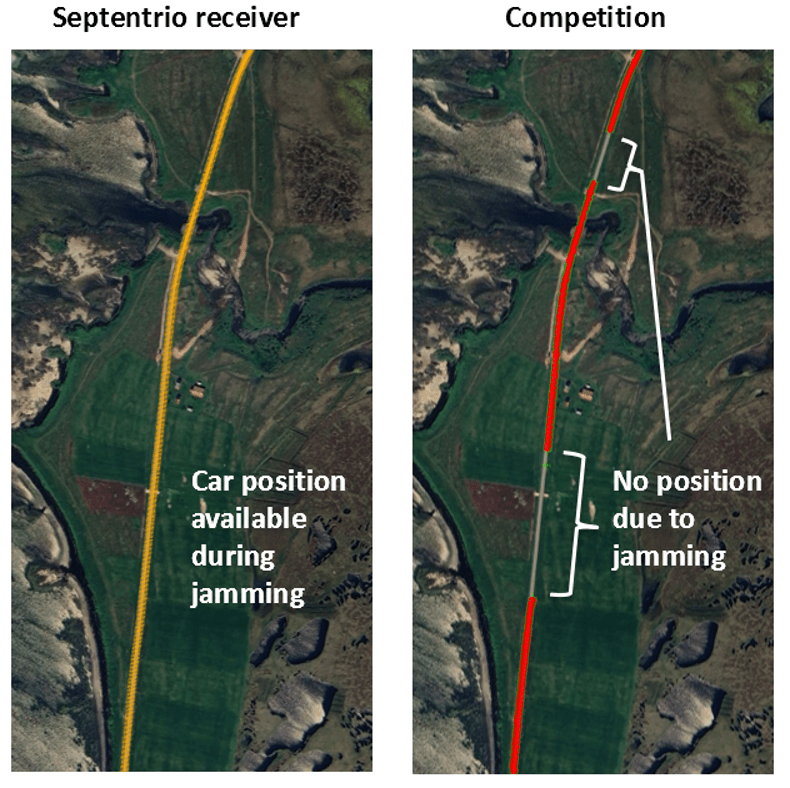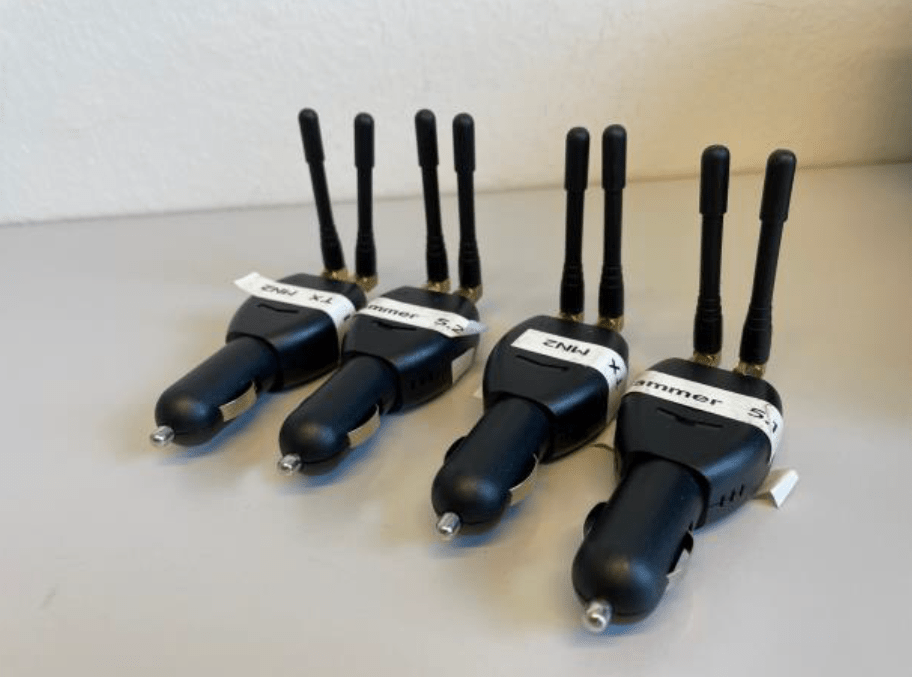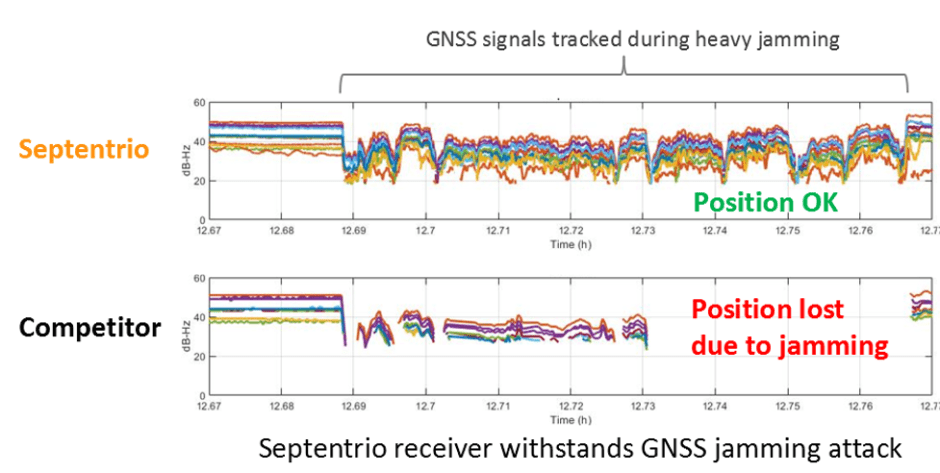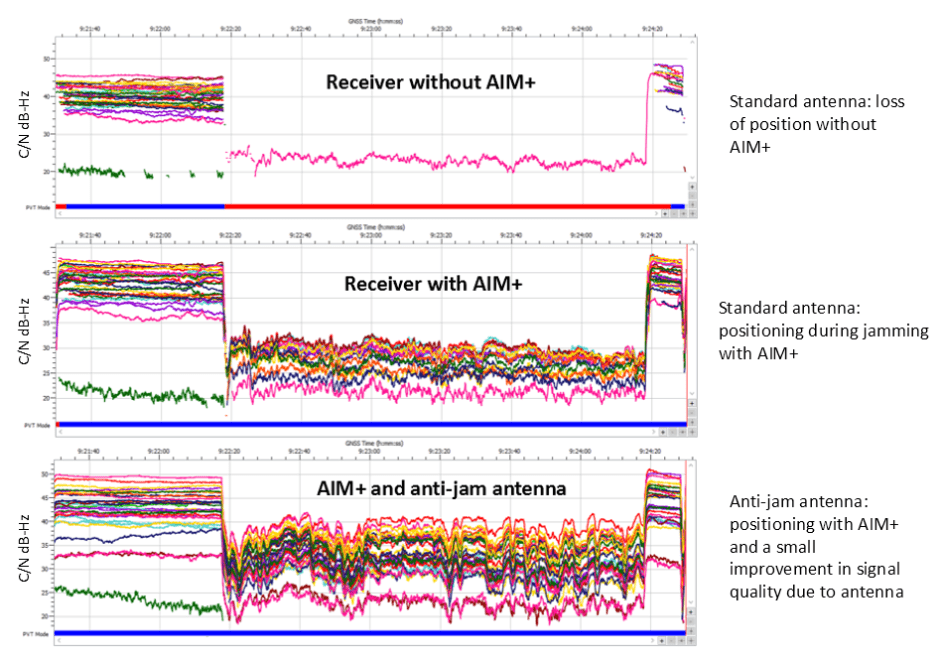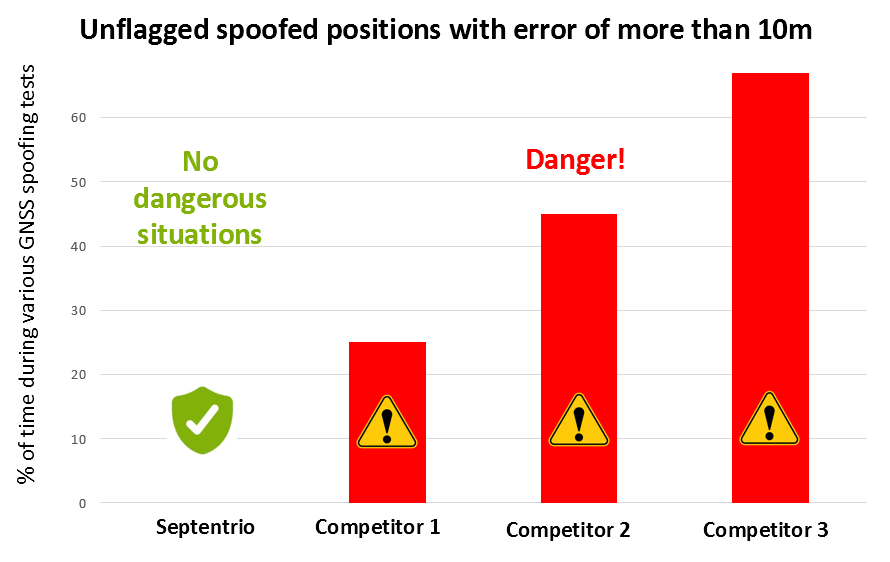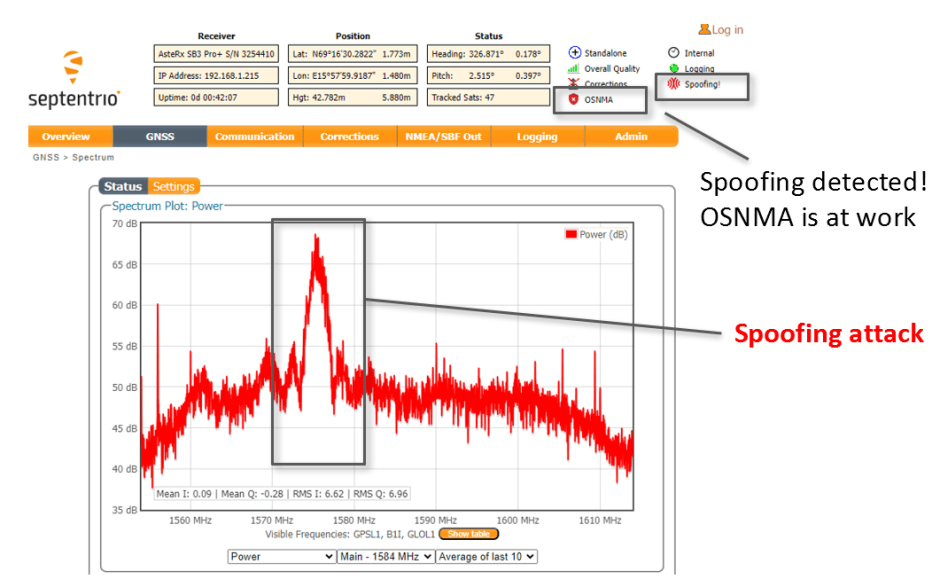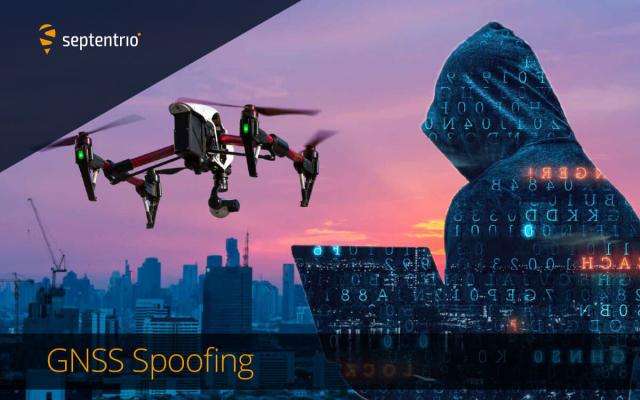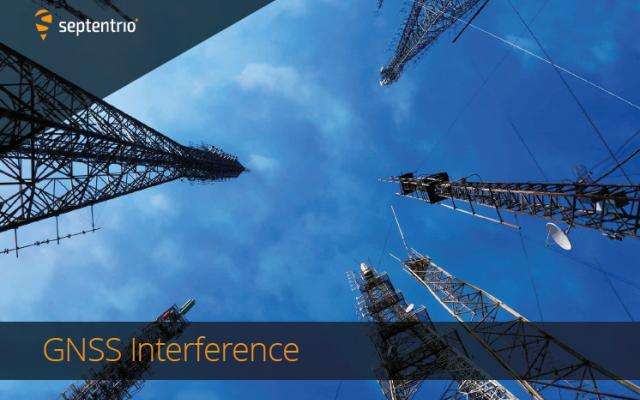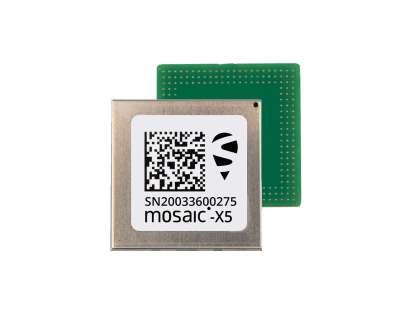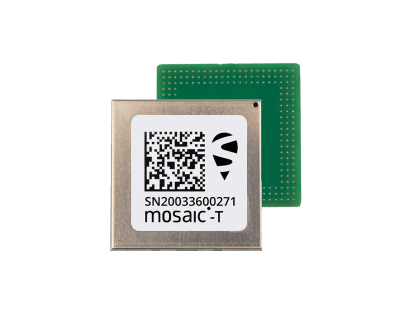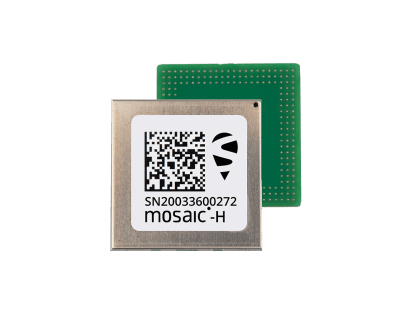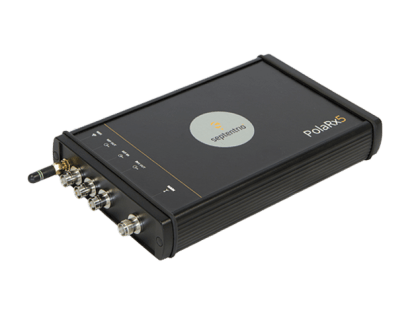Most resilient receiver: withstanding GNSS jamming and spoofing

Multi-layered receiver protection pays off
During JammerTest 2024, Septentrio receivers with AIM+ technology demonstrated exceptional resilience to high-powered jammers and various types of spoofing. This performance reflects over 25 years of expertise in developing reliable GNSS positioning technology, incorporating multiple layers of protection:
- Multi-frequency technology for signal diversity, ensuring fallback during jamming or spoofing
- Cryptographic signal authentication (OSNMA) to verify genuine signals
- Anomaly detection powered by continuously updated big data from years of field observations
As seen on the news, GNSS spoofing is increasingly common due to readily available transmitter hardware and signal simulator software. Spoofing poses an even greater risk than jamming, as it can not only disrupt operations but also manipulate navigation systems, potentially resulting in planned collisions or theft. Securing your system at the receiver core is the most effective strategy to ensure resilient, reliable operation.
Learn more about AIM+ Anti-Spoofing technology or download our comprehensive GNSS Spoofing brochure. The video below is a summary of Septentrio’s results from JammerTest 2024. Feel free to share this video with those interested in resilient and reliable positioning.
Tried, tested and true
Always accurate and available Positioning, Navigation and Time or Assured PNT is key to successful industrial or critical operations in challenging environments. By regularly participating in live events such as the JammerTest, Septentrio's anti-jamming and anti-spoofing technology is continuously being tested and improved to withstand the latest interference attacks. This technology has also been confirmed to be effective by users out in the field, who are using Septentrio receivers in places of malicious interference, such as near contested borders.
Although an anti-jam antenna can play a role in hardening the system, the most effective approach to securing your system is to use a receiver with advanced anti-spoofing and anti-jamming (AJAS) protection. For spoofing this means including several layers of protection which shield the receiver from various types of attacks. Septentrio receivers come in various formats from rugged boxes to OEM boards and compact modules, like the low-weight, low-power mosaic-X5 module receiver, which is also easy to integrate and is compatible with popular autopilots like Pixhawk, ArduPilot and PX4 Autopilot. For more information about resilient GNSS receivers and technology please contact Septentrio.
Tests with various anti-jam antennas showed interference reduction of about 10 dB due to the antenna. While advanced anti-jam technology like AIM+ plays a key role in positioning availability under jamming, an antenna plays a supporting role and can improve the chances of getting positioning in cases where the jamming is still slightly stronger than the ability of the receiver to mitigate it. While anti-jam antennas can be effective for wide-band “white-noise” jamming they are less effective for other types of jamming.
Comprehensive anti-spoofing requires multiple layers of protection
Hackers employ various types of spoofing to hijack positioning, navigation or time, from simple asynchronous spoofing to sophisticated synchronous types which are almost identical to real GNSS signals. For the highest degree of anti-spoofing protection and situational awareness a receiver requires several layers of protection (find out more in our GPS Spoofing brochure).
AIM+ detects, flags and mitigates GNSS spoofing
The plots below show positioning of several different receivers in a moving car during a GNSS spoofing attack.





